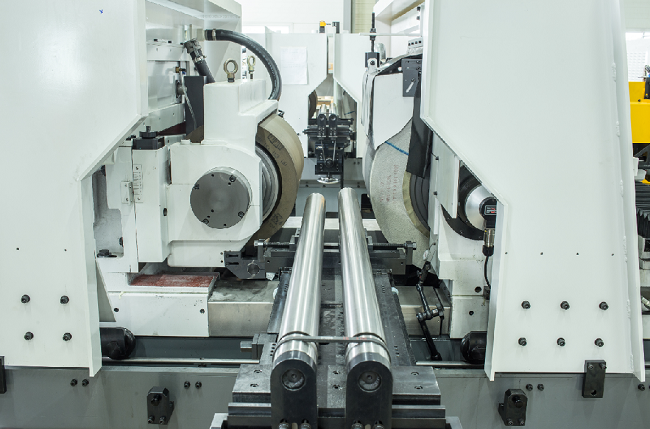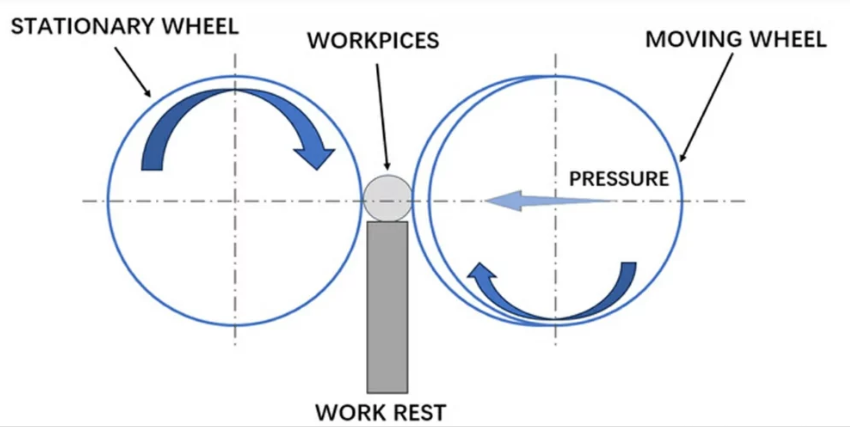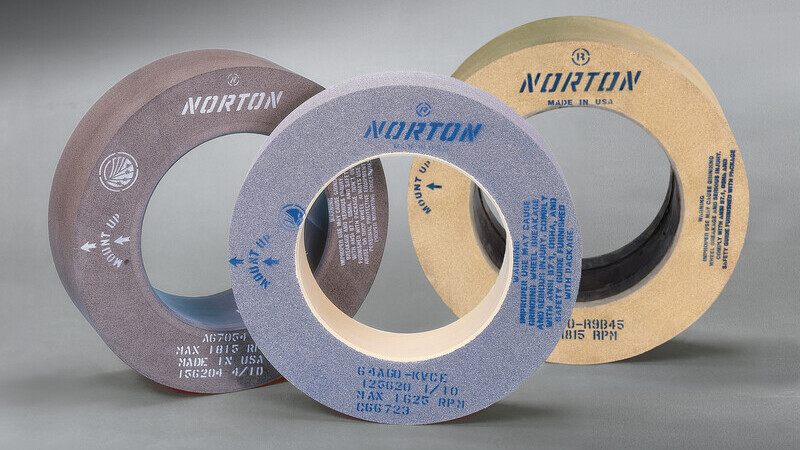
Centerless grinding is a precise method for shaping metal components with high accuracy. Understanding its importance can significantly enhance your machining process.
Centerless grinding is a vital method for achieving high-precision finishes on metal parts.
Let’s dive into the world of centerless grinding, exploring how it works and why it's essential for many industries.
What is Centerless Grinding?
Centerless grinding is a method used to grind cylindrical parts without the need for a spindle or fixture to hold the workpiece.
In this process, the workpiece is supported by two rotating wheels: a grinding wheel and a regulating wheel. The grinding wheel removes material from the workpiece, while the regulating wheel controls the speed and direction of the piece.
Centerless grinding1 allows for fast, efficient, and high-precision metalworking.

Dive-Deeper: How Does Centerless Grinding Work?
Unlike traditional grinding, where the workpiece is held between centers, centerless grinding does not require a fixture. The workpiece rests on a bed or support, and the rotating grinding wheel removes material to achieve the desired shape and finish.
Key Components of Centerless Grinding:
- Grinding Wheel: Removes material from the workpiece.
- Regulating Wheel: Controls the rotational speed and positioning of the workpiece.
- Work Rest Blade: Supports the workpiece while it is being ground.
Centerless grinding is highly effective for parts with a high production volume due to its efficiency and consistent results. It’s widely used for both small and large batches.
Types of Centerless Grinding Methods
There are three main types of centerless grinding methods, each offering different benefits depending on the part and requirements.
The three primary types of centerless grinding are in-feed, through-feed, and end-feed grinding.

Dive-Deeper: Exploring the Different Methods
Through-Feed Grinding2
Through-feed grinding is used when parts can be fed continuously into the machine. This method is ideal for cylindrical parts that do not have any complicated features.
| Method | Suitable for | Pros | Cons |
|---|---|---|---|
| Through-Feed | Long, cylindrical parts | Continuous operation, high speed | Limited to simple shapes |
- How it works: The part enters the grinding machine and moves between the grinding wheel and regulating wheel, with material being removed until the desired shape is achieved.
In-Feed Grinding3
In-feed grinding is used when parts require a more complex shape. The workpiece is fed into the machine, and material is removed in a specific area.
| Method | Suitable for | Pros | Cons |
|---|---|---|---|
| In-Feed | Complex shapes, small batches | High precision for complex parts | Slower than through-feed |
- How it works: The part is fed into the machine at a fixed position, allowing for more precise control when grinding specific areas of the part.
End-Feed Grinding
End-feed grinding is ideal for grinding parts with a taper or varying diameters. It allows for the grinding of the end faces of the part while it moves between the grinding and regulating wheels.
| Method | Suitable for | Pros | Cons |
|---|---|---|---|
| End-Feed | Parts with tapered or varying diameters | Can handle tapered parts | More complex setup required |
- How it works: The part is fed into the machine at an angle, with the grinding process focusing on the end faces and tapered sections.
Applications of Centerless Grinding
Centerless grinding is versatile and is used in many industries that require high-precision cylindrical parts4.
Centerless grinding has numerous applications, especially in industries where efficiency and precision are critical.
Dive-Deeper: Where is Centerless Grinding Used?
Let’s look at some industries that rely on centerless grinding for their manufacturing needs:
Automotive Industry
In the automotive industry5, centerless grinding is essential for producing high-precision parts like shafts, bearings, and fuel injectors. These components require smooth finishes and tight tolerances, making centerless grinding an ideal choice.
- Example Parts: Camshafts, crankshafts, axles, and valve stems.
Aerospace Industry
Aerospace applications demand components that are both lightweight and extremely precise. Centerless grinding is used to produce components such as turbine shafts, gears, and landing gear components.
- Example Parts: Aircraft structural parts, bearings, and fasteners.
Medical Device Manufacturing
The medical industry also benefits from centerless grinding due to its ability to produce highly accurate parts. Medical devices, especially those involving implants or surgical tools, require components that meet stringent quality standards.
- Example Parts: Surgical instruments, catheter parts, and orthodontic wires.
Industrial Manufacturing
In industrial settings, centerless grinding is used to create high-precision components for various machinery and equipment, ensuring smooth operation and durability.
- Example Parts: Rollers, spindles, and bushings.
Advantages and Disadvantages of Centerless Grinding
Centerless grinding offers several advantages, but it also comes with its own set of limitations.
Let’s explore the benefits and potential drawbacks of using centerless grinding in your manufacturing process.

Dive-Deeper: Analyzing the Pros and Cons
Advantages
- High Efficiency: Centerless grinding is capable of high-volume production, as the workpiece can be continuously fed through the machine.
- Precision: This process can achieve very tight tolerances, making it ideal for parts that require high precision.
- Cost-Effective: For mass production, centerless grinding is a cost-effective method, reducing the need for labor-intensive operations.
- Versatility: It can be used for both simple and complex parts, and it is ideal for cylindrical and round parts.
Disadvantages
- Limited to Cylindrical Parts: Centerless grinding is best suited for cylindrical parts, making it less versatile for other shapes.
- Requires Setup Time: The initial setup and calibration of the machine can be time-consuming and may require specialized expertise.
- Size Limitations: Larger components may not fit in the machine, limiting the size of parts that can be processed.
| Advantage/Disadvantage | Description |
|---|---|
| Advantage | High efficiency, especially for mass production |
| Advantage | Achieves high precision and tight tolerances |
| Disadvantage | Limited to cylindrical parts |
| Disadvantage | Setup time can be lengthy for new projects |
Common Challenges in Centerless Grinding and How to Address Them
While centerless grinding is an efficient process, several challenges can arise. Understanding these issues and knowing how to address them is key to achieving optimal results.
From machine setup to material inconsistencies, there are several challenges that operators must overcome in centerless grinding.
Dive-Deeper: Overcoming Common Centerless Grinding Issues
1. Workpiece Deflection6
Workpiece deflection can occur when the part flexes under pressure, leading to inaccuracies in the grinding process.
Solution:
- Use a proper work rest blade to support the part.
- Choose appropriate materials that can withstand the forces applied during grinding.
2. Wheel Wear7
Grinding wheels wear out over time, which can affect the accuracy of the process and the quality of the finished part.
Solution:
- Regularly inspect and replace grinding wheels to maintain precision.
- Use dressing tools to maintain the wheel’s sharpness and shape.
3. Inconsistent Material Removal8
Uneven material removal can lead to a poor finish or dimensional inconsistencies in the workpiece.
Solution:
- Adjust the speed and feed rates to ensure uniform material removal.
- Use coolant to maintain temperature control and improve consistency.
4. Machine Alignment
Incorrect machine alignment can cause alignment errors in the finished part.
Solution:
- Perform routine maintenance and calibration on the machine to ensure accurate alignment.
- Ensure the grinding wheel and regulating wheel are properly aligned to avoid part inaccuracies.
Conclusion
Centerless grinding is an essential process in modern manufacturing, offering numerous advantages such as precision, efficiency, and cost-effectiveness. However, like any manufacturing technique, it comes with its challenges. By understanding these challenges and implementing the right solutions, you can ensure that your centerless grinding processes are optimized for the best results.
-
Explore the advantages of centerless grinding to understand its efficiency and precision in metalworking processes. ↩
-
Learn about through-feed grinding to see how it enhances production speed for cylindrical parts. ↩
-
Discover the intricacies of in-feed grinding for complex shapes and its precision benefits. ↩
-
Understanding high-precision cylindrical parts can enhance your knowledge of manufacturing processes and their importance in various industries. ↩
-
Explore how centerless grinding is revolutionizing the automotive industry by producing essential components with precision and efficiency. ↩
-
Understanding workpiece deflection is crucial for improving accuracy in centerless grinding. Explore this link for in-depth solutions and expert insights. ↩
-
Minimizing wheel wear is essential for maintaining precision in grinding. Discover effective strategies and best practices by following this link. ↩
-
Achieving consistent material removal is vital for quality finishes. Learn about techniques and tips to enhance your grinding process by visiting this resource. ↩

